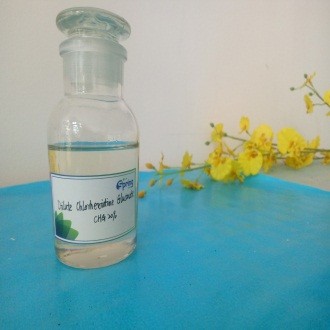Chlorhexidine gluconate is a widely used disinfectant and antiseptic agent known for its effectiveness in killing a broad spectrum of microorganisms, making it a valuable tool in various healthcare, pharmaceutical, and personal hygiene applications. Its efficacy can be discussed in several key aspects.
Antimicrobial Activity:
Chlorhexidine gluconate exhibits strong antimicrobial properties against a wide range of microorganisms, including bacteria, fungi, and some viruses. It disrupts the cell walls and membranes of these pathogens, leading to their destruction. This property makes it an excellent choice for surgical site preparation, wound care, and the prevention of healthcare-associated infections.
Persistent Activity:
One of the remarkable features of Chlorhexidine gluconate is its residual or persistent activity. It can bind to the skin and mucous membranes, providing prolonged protection against microbes. This persistence in activity sets it apart from many other disinfectants, which have a shorter duration of effectiveness.
Broad Spectrum:
Chlorhexidine gluconate is effective against both Gram-positive and Gram-negative bacteria. It also works against many common antibiotic-resistant strains, such as MRSA (Methicillin-Resistant Staphylococcus Aureus) and VRE (Vancomycin-Resistant Enterococci). This broad-spectrum action is a significant advantage, especially in healthcare settings.
Biofilm Disruption:
Biofilms are microbial communities that can form on various surfaces, making them resistant to many disinfection methods. Chlorhexidine gluconate is effective in disrupting and preventing the formation of biofilms, which is particularly important in the prevention of catheter-associated urinary tract infections and oral hygiene products.
Gentle on Skin and Mucous Membranes:
Despite its robust antimicrobial properties, Chlorhexidine gluconate is known to be gentle on the skin and mucous membranes when used as directed. It is commonly used as an antiseptic for pre-surgical skin preparation and is well-tolerated by most patients.
Low Irritation Potential:
Compared to other disinfectants and antiseptics, Chlorhexidine gluconate is associated with relatively low irritation and sensitivity reactions. This makes it suitable for prolonged use in various healthcare applications.
Prolonged Residual Effect:
Chlorhexidine gluconate's persistent activity allows it to remain active for an extended period after application. This long-lasting effect helps in reducing the risk of infection in healthcare settings and other applications.
Versatile Applications:
Chlorhexidine gluconate is employed in a variety of settings, including hospitals, dental clinics, surgical units, and even in over-the-counter products like mouthwash and hand sanitizers.
Complementary Use:
It can be used in conjunction with other disinfectants and antiseptics, offering an additional layer of protection against various pathogens.
Safety Considerations:
While Chlorhexidine gluconate is generally safe when used appropriately, it is important to consider factors like concentration, duration of use, and potential allergies in some individuals.
In conclusion, Chlorhexidine gluconate is a highly effective disinfectant with broad-spectrum antimicrobial properties, persistent activity, and a good safety profile. Its versatility in various applications, including clinical, surgical, and personal hygiene settings, underscores its significance in infection prevention and control. When used in accordance with recommended guidelines, Chlorhexidine gluconate can significantly reduce the risk of infections and enhance overall hygiene and patient safety.
Post time: Oct-12-2023


